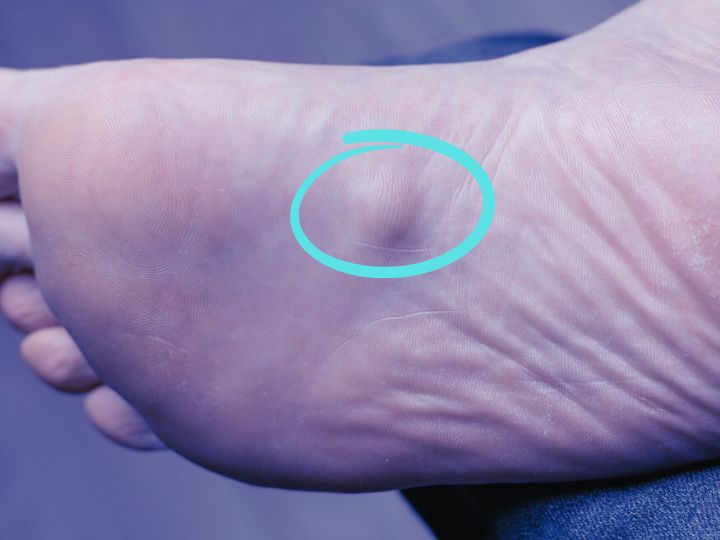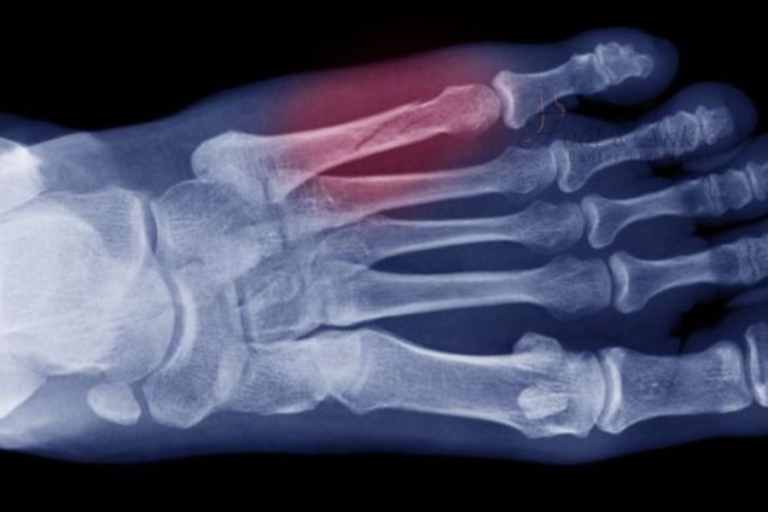Plantar fibromas can be a painful and frustrating condition that affects your ability to walk comfortably. Many patients wonder, “How to cure plantar fibroma?” While treatment can vary depending on severity, today’s advanced medical care offers several options to relieve symptoms and restore foot health.
What Is a Plantar Fibroma?
A plantar fibroma is a firm, non-cancerous mass that develops in the arch of the foot within the plantar fascia. Over time, it can cause discomfort, especially when walking or standing.
Common Symptoms of Plantar Fibroma
- A noticeable lump in the arch of the foot
- Pain or tenderness when wearing shoes
- Difficulty walking or exercising
- Progressive discomfort without treatment
What Causes Plantar Fibroma?
The exact cause is still unknown, but several factors may contribute, including:
- Genetic predisposition
- Repeated trauma or injury to the foot
- Certain medical conditions like Dupuytren’s contracture
How to Cure Plantar Fibroma: Your Treatment Options
1. Non-Surgical Treatments
For many patients, conservative treatments can effectively manage symptoms.
Orthotic Devices
Custom-made shoe inserts can help distribute pressure away from the fibroma, relieving pain.
Stretching and Physical Therapy
Strengthening and stretching exercises for the foot can improve mobility and reduce strain on the arch.
Anti-Inflammatory Medications
Over-the-counter medications or prescribed anti-inflammatories can help manage pain and swelling.
Corticosteroid Injections
Targeted steroid injections can shrink the fibroma and offer temporary relief from symptoms.
2. Advanced Treatments
Shockwave Therapy
Some patients benefit from extracorporeal shockwave therapy (ESWT), which promotes healing and tissue repair.
Collagenase Injections
This newer technique uses an enzyme to break down fibrous tissue, potentially reducing the fibroma without surgery.
3. Surgical Treatment: When Is Surgery Necessary?
If non-surgical treatments fail and the fibroma continues to cause significant pain or disability, surgical removal may be considered.
Surgical procedures include:
- Complete excision of the fibroma
- Partial removal with repair of the plantar fascia
- Recovery typically involves several weeks of limited weight-bearing and physical therapy.
Important: Surgery can carry risks such as recurrence or arch instability, which is why it’s usually considered a last resort.
How to Prevent Plantar Fibroma from Worsening
While it may not always be preventable, you can take steps to minimize symptoms:
- Wear supportive, cushioned footwear
- Avoid walking barefoot on hard surfaces
- Maintain a healthy weight
- Address foot injuries promptly
Why Expert Care Matters
Understanding how to cure plantar fibroma starts with an accurate diagnosis and personalized care plan. At the Foot and Ankle Center of Arizona, Dr. Kris A. DiNucci, DPM, FACFAS, specializes in diagnosing and treating plantar fibromas with advanced, patient-centered approaches.
If you’re experiencing symptoms, early intervention can make a significant difference. Our Scottsdale-based team is here to help you return to pain-free living.
Conclusion
While a plantar fibroma can be challenging, there are many effective treatments available. From custom orthotics to advanced therapies and, if necessary, surgery, finding the right solution for how to cure plantar fibroma depends on your unique case. Consulting a foot and ankle specialist ensures you receive the best possible care tailored to your needs.
Frequently Asked Questions
Q1. Can a plantar fibroma go away on its own?
A plantar fibroma rarely resolves without treatment. Conservative options like orthotics and therapy can manage symptoms, but the fibroma itself often remains unless surgically removed.
Q2. What is the fastest way to treat plantar fibroma?
Custom orthotics combined with corticosteroid injections can provide the fastest symptom relief. However, long-term treatment depends on the size and severity of the fibroma.
Q3. Is surgery the only cure for plantar fibroma?
Surgery is considered when conservative treatments fail. Many patients can manage symptoms successfully without surgery through non-invasive therapies.
Q4. How long does recovery take after plantar fibroma surgery?
Recovery typically takes several weeks to a few months, depending on the extent of the surgery. Physical therapy is often needed to regain full function.
Q5. How can I prevent a plantar fibroma from getting worse?
Wearing supportive shoes, using orthotics, avoiding foot injuries, and seeking early treatment at the first sign of discomfort can help prevent worsening.
Summary:
Plantar fibroma is a painful foot condition that can be treated through orthotics, physical therapy, injections, or surgery. This article explains how to cure plantar fibroma effectively, explores both non-surgical and surgical options, and highlights the importance of expert care for long-term relief and recovery.




